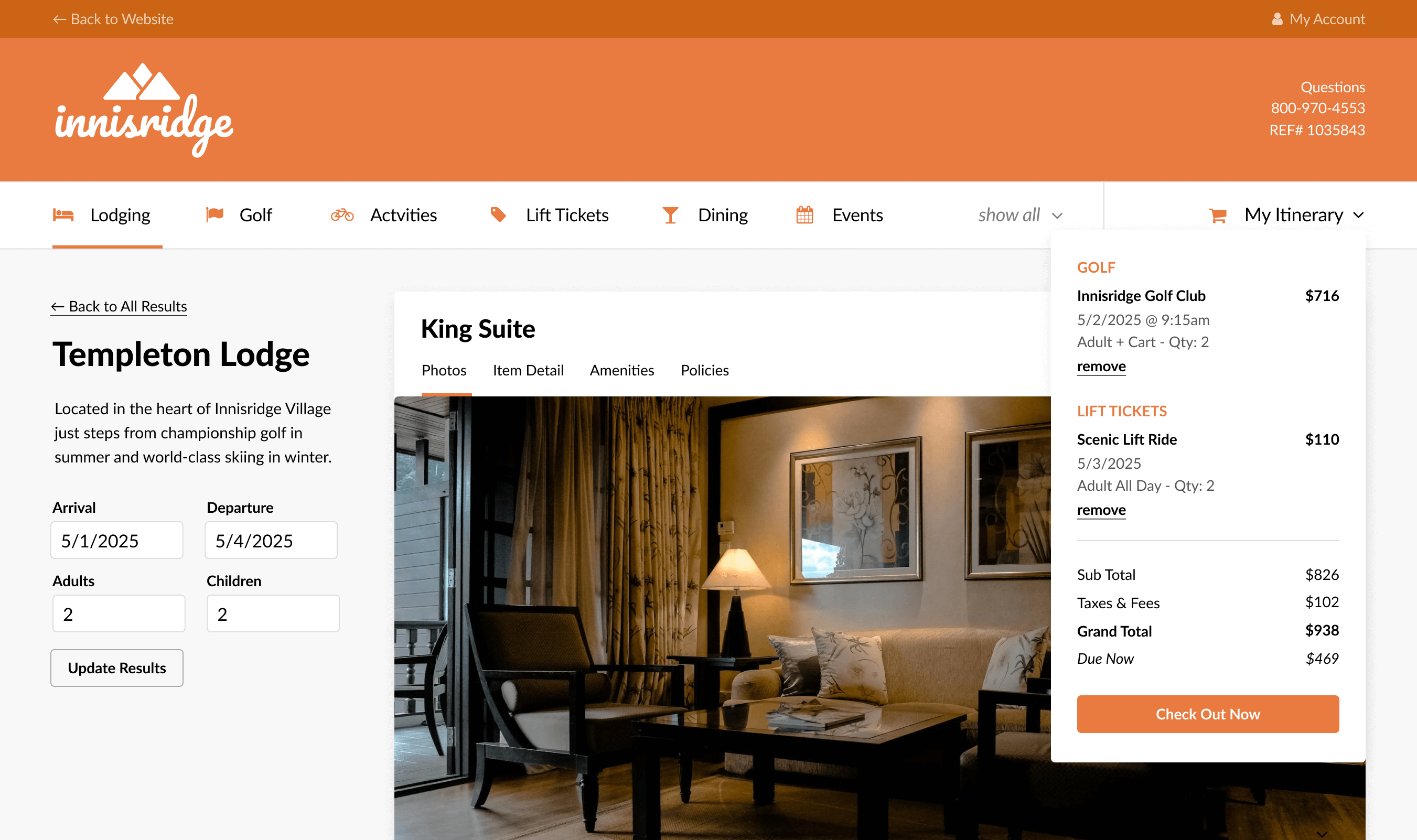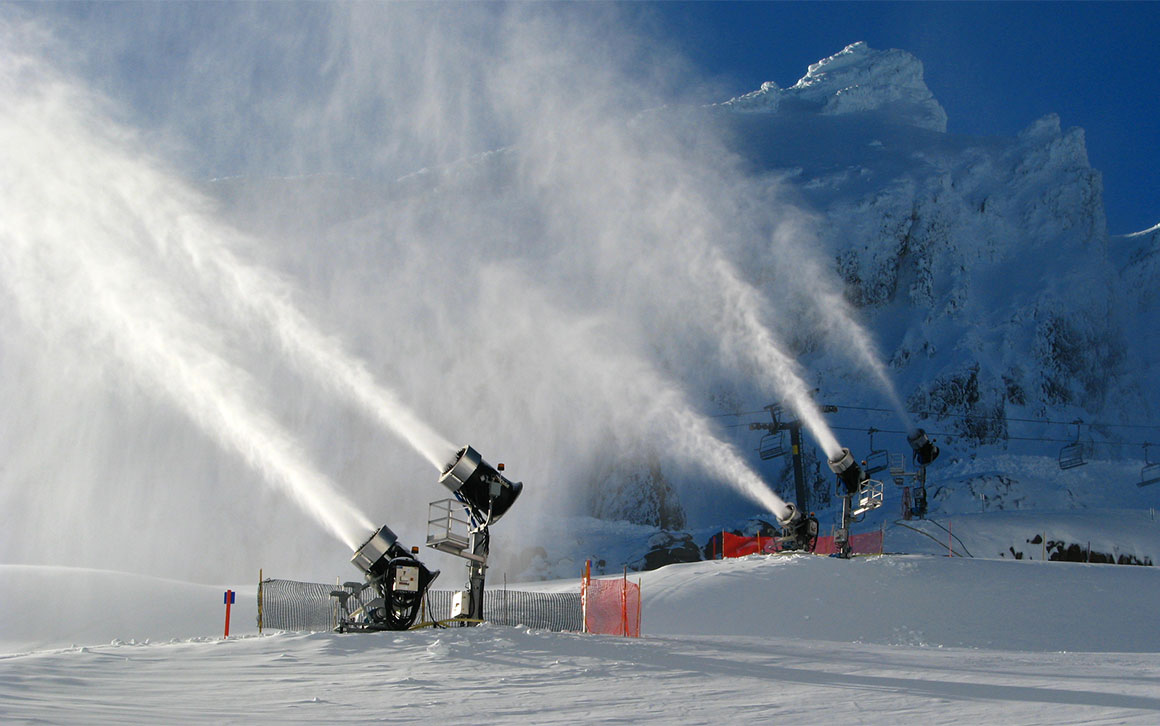
Trends

Although one more month of the summer season remains before officially calling it the best ever, with fall colors and the first round of snowstorms already hitting mountain destinations, DestiMetrics,* the Business Intelligence division of Inntopia, is shifting focus to the upcoming winter season and the booking patterns and trends that are already emerging. In their most recent Monthly Market Briefing that is distributed to 290 participating properties in eight western states, the data collected and analyzed through Sept. 30 reveals an optimistic forecast for the coming ski and snowboard season. In addition to offering year-over-year comparisons, the Briefing provides a comparison to two years ago at this same time to provide context to the data that has often appeared artificially inflated due to comparisons to a year ago when the profound impact of the pandemic was still being felt throughout mountain communities.
Winter shaping up nicely
As of Sept. 30, on-the-books occupancy for November through April is up a formidable 75.5 percent compared to last year at this time with gains in all six months. For the same period, the Average Daily Rate (ADR) is up 25.6 percent and when combined with the surge in occupancy, is showing a monstrous revenue gain of 120.4 percent. And while not as (expectedly) stunning as compared to last year when the pandemic was still raging and vaccines were still months away, the results compared to two years ago at this time are impressive. Occupancy is up 15.7 percent compared to this time two years while ADR is up a strong 19.3 percent so that properties are seeing a robust 38 percent increase in aggregated winter revenues compared to two years ago. December is showing particular strength with on the books occupancy up 39.9 percent compared to two years ago– indicating exceptional growth when compared to that fairly typical year.
Booking pace in September
While bookings were brisk during the month of September for the upcoming winter, the booking pace—the difference between incremental fill that was booked both this year and last year– for arrivals in both September and October was down dramatically. September plunged 62.2 percent while October dropped 36.7 percent compared to last year at this time. However, when compared to two years ago, the booking pace for arrivals in September 2019 through February 2020 is up 20.4 percent with only September declining.
Short and sweet September and summer update
Summer records continued to widen their distance from all previous years. Actual occupancy for the month of September finished up 15.1 percent compared to one year ago but was down 3.8 percent compared to September 2019. But once again, ADR provided a healthy cushion with the ADR up 20 percent compared to one year ago and a remarkable 37.4 percent compared to two years ago. The revenue comparisons to both years revealed consumers obvious acceptance of the dramatic growth in daily rates. Aggregated revenues for September were up a hefty 38.1 percent compared to last September and an even more impressive 37.4 percent compared to two years ago.
For the full summer, occupancy is up a substantial 50.2 percent compared to last summer but only a slight one percent compared to Summer 2019. Daily rates were up 23 percent compared to last summer while up a healthy 32.9 percent compared to two years ago in the pre-pandemic summer.
“A late summer surge in COVID-19 cases slowed bookings for September and October but at the same time, revenue gains remained dramatically ahead of 2019 driven by rising room rates,” explained Tom Foley, senior vice president for Business Process and Analytics for Inntopia and author of the monthly report. “And despite that hiccup in occupancy for the late summer months, winter bookings continued to be very strong and have established a solid foundation for the winter season, especially in December,” he continued.
Economic indicators
The Dow Jones Industrial Average (DJIA) posted its largest decline since October 2020 by shedding 1,516.8 points to drop 4.3 percent during September. Despite a decline in COVID-19 cases, markets remained jittery for a variety of reasons including Congress’s delay in agreeing to extending the debt ceiling, ongoing inflation worries, a weak job market, and shrinking consumer confidence. For the third consecutive month, the Consumer Confidence Index (CCI) dropped–a sharp 5.1 percent during September– to bring the Index down more than 15 percent over the past three months. Although the CCI remains relatively strong by historical standards and is up nearly eight percent from September 2020, the downward trend may signal a retreat in consumer spending.
The national Unemployment Rate fell for the second consecutive month from 5.2 percent to 4.8 percent, driven largely by job seekers ending their search efforts and no longer being counted on unemployment rosters. Additionally, job creation fell woefully short of forecasts by adding only 194,000 new jobs in September at a level well below the anticipated 500,000.
“The resurgence of the Delta variant of COVID-19 in late summer is receiving part of the blame for the sluggish job creation during August and September that was expected to be around 1.25 million but is, in fact, only around 560,000,” Foley reported. “Paradoxically, employers are having a difficult time filling those 10.2 million full- and part-time jobs and many of those are in the leisure and hospitality industry,” he continued. “That struggle to fill positions is creating challenges for the lodging and hospitality industry to maintain the quality services that are expected by consumers for the appreciably higher daily rates.”
Keeping an eye on
-Occupancy gains aren’t all that they appear since the number of Room Nights Available (RNA) have been decreasing throughout the pandemic and remain sharply below where they were in the past two years. As a result, there has been an artificial inflation of occupancy data when compared to two years ago. The one percent gain for the summer was actually a decline when the reduced number of room nights is factored into the equation. This reduction in available rooms has the potential to impact winter occupancy data as well.
-Room Nights Available (RNA) continue to decline. Homeowners are using their units more frequently, limiting rentals due to COVID-19 concerns, or they are taking advantage of skyrocketing real estate prices to sell their units entirely with many new owners opting not to place those units back into the short-term rental pool. The result is an understatement of lodging occupancy.
-Average Daily Rate (ADR) remains highly elevated compared to both last year and two years ago at this time. Daily rates are currently outpacing inflation between 100 to 1,000 percent year-over-year. When compared to pre-pandemic data from 2019, the inflation rate is more realistic but still dramatic. The aggregated increase in daily rates for May 2021 through on-the-books until March 31, 2022 is up 27.6 percent. When compared to the national two-year inflation rate of approximately 6.3 percent, it illustrates the current strength of the demand for mountain travel destinations as daily rates are far outpacing the average increase in inflation.
-Winter occupancy for Nov. 1 through March 31 is up compared to two years ago at this time and illustrates considerable strength in long-lead bookings for the upcoming winter.
“As COVID-19 cases declined in September, the booking dip we noted in August recovered although not enough to bolster the autumn months of September and October,” Foley observed. “Instead, consumer focus was on the winter months, primarily December, and that strong early demand for long-lead bookings is putting down a very solid foundation for the season ahead,” he continued. “That said, concerns remain that shaky economic news, difficulty hiring adequate staffing, eventual consumer pushback on steadily rising rates, and of course, the uncertainty of snowfall and weather could all present challenges in the months ahead. But for now, the winter season is looking very bright,” he concluded.
###
*DestiMetrics, part of the Business Intelligence platform for Stowe-based Inntopia, tracks lodging performance in resort destinations. They compile forward-looking reservation data each month and provide individualized and aggregated results to subscribers at participating resorts. Data for western resorts is derived from a sample of approximately 290 property management companies in 18 mountain destination communities, representing approximately 30,000 rooms across Colorado, Utah, California, Nevada, Wyoming, Montana, and Idaho and may not reflect the entire mountain destination travel industry. Results may vary significantly among/between resorts and participating properties.